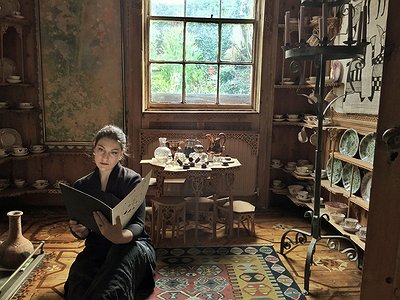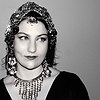Part 2
Take us through a day in your life, from a possible morning routine through to your work, please. Do you have a fixed schedule? How do music and other aspects of your life feed back into each other - do you separate them or instead try to make them blend seamlessly?
My schedule isn’t very consistent, with the project-based nature of my work. I try to correct the tendency for administration to dominate the day by starting with a creative exercise in the morning, such as writing an event score on the way to a café. Then I save meetings for the afternoon (or even dedicate a couple of days a week to them). I work from home, and in future I’d love a studio in a communal space, for the sense of compartmentalisation and community.
Can you talk about a breakthrough work, event or performance in your career? Why does it feel special to you? When, why and how did you start working on it, what were some of the motivations and ideas behind it?
In the traditional sense, my ‘breakthrough work’ was Muted Lines, commissioned by saxophonist Trish Clowes while I was in residence with the LSO. It went on to win an Ivors Composer Award. After that, more doors opened for me, which I feel conflicted about, because I don’t think competitions are a fair assessment of culture or value. However, it inspired me to make the recent Welcome Party album with NMC Recordings, so I’m grateful for that.
A vivid memory of a creative breakthrough was meeting Crewdson live on air when I was presenting a show for Resonance FM. We improvised with harp and electronics, and unintentionally it began our collaboration. Recordings of that same improv ended up opening our BRACE album.
There are many descriptions of the ideal state of mind for being creative. What is it like for you? What supports this ideal state of mind and what are distractions? Are there strategies to enter into this state more easily?
My creative impulse left me for the first time in 2020, so I can say that fear, loss and survival can have a negative impact on my creative thinking. With all the creative projects completed in 2021, I have reassured myself that creativity can return, but it has taught me not to take it for granted. I find myself most creative in reaction to stories, and to other collaborators, so I seek them out.
Music and sounds can heal, but they can also hurt. Do you personally have experiences with either or both of these? Where do you personally see the biggest need and potential for music as a tool for healing?
Hearing loss has made sound painful at times, translating music into a roaring sea of distortion pedals. I have also created music to soothe people in the pandemic for the Wellcome Trust, and in my personal life. I improvised a song while waiting for an ambulance for my late auntie. It’s called Lullaby Between Two, performed by Girton College Choir for the Welcome Party album. Music should be at our bedside at the beginning and the end of life.
There is a fine line between cultural exchange and appropriation. What are your thoughts on the limits of copying, using cultural signs and symbols and the cultural/social/gender specificity of art?
I maintain that reflection is better than imitation, personally, and this extends to cultural inspiration. I feel that art is freedom, and I encourage creative exchange and proper credit so that we can learn from new perspectives in context. Our cultural connections go back further than we can remember, and perhaps that’s why we keep overlapping. Music can be found across the world, which is a phenomenon to be celebrated: almost everywhere, humans have spent their time creating abstract sonic languages to communicate on a different level.
Our sense of hearing shares intriguing connections to other senses. From your experience, what are some of the most inspiring overlaps between different senses - and what do they tell us about the way our senses work?
I create AugenMusik (eye-music) scores, which use visual and physical parameters to generate my music. For example, in the song ‘Inkwells’, I cut ‘fretwork’ holes across the pages of manuscript so that some notation could be seen through them, and remain as you turn the page to change their context. I also enjoy collaborating with people who specialise in the visual arts such as dance, ballet, opera, theatre, film, and recently printing. But most of all, since the pandemic, I crave the physical sensation of the vibrations when instruments play together.
Art can be a purpose in its own right, but it can also directly feed back into everyday life, take on a social and political role and lead to more engagement. Can you describe your approach to art and being an artist?
On a philosophical level, music is the way I understand the world — from social change to existential questions. On a community level, the arts have been shown to be connected to health and wellbeing. I am the product of this combination of community music-making, myself benefitting from the legacy of Britten and Imogen Holst in my hometown. So I try to continue this connection, contributing to interdisciplinary conferences, studies, and collaborations with practitioners helping those recovering from stroke, brain injury, or living with physical disability.
What can music express about life and death which other forms of art may not?
Music, as sound, is heard, but not seen; physically felt, but not held. It can reach a baby in the womb, and a person in palliative care. The patterns in music reflect the repetitions of life and death, the lungs filling and emptying, and the heart beating until it stops.






